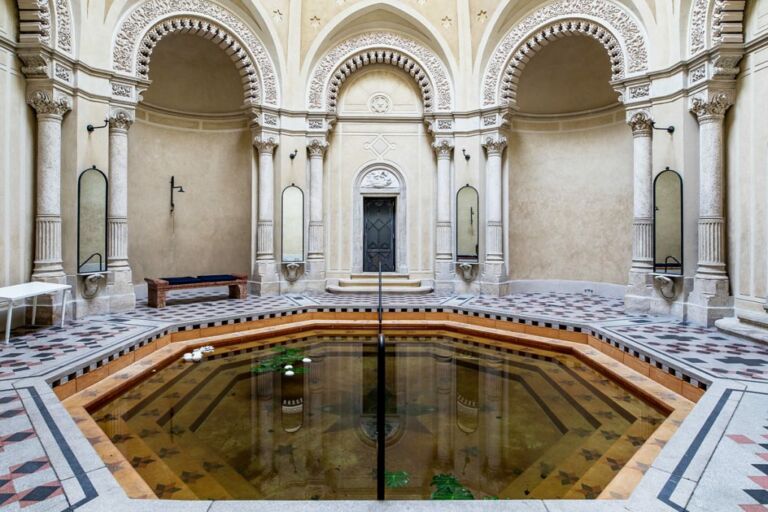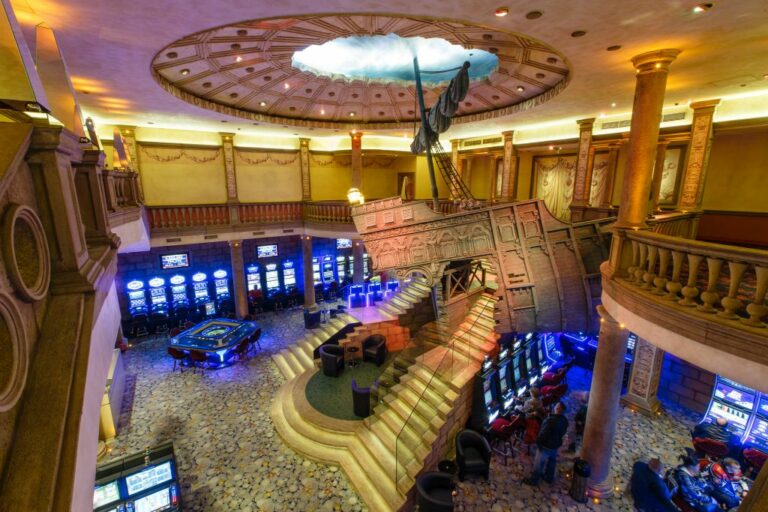Getting around Budapest: the ultimate guide to public transport (2025 updates)
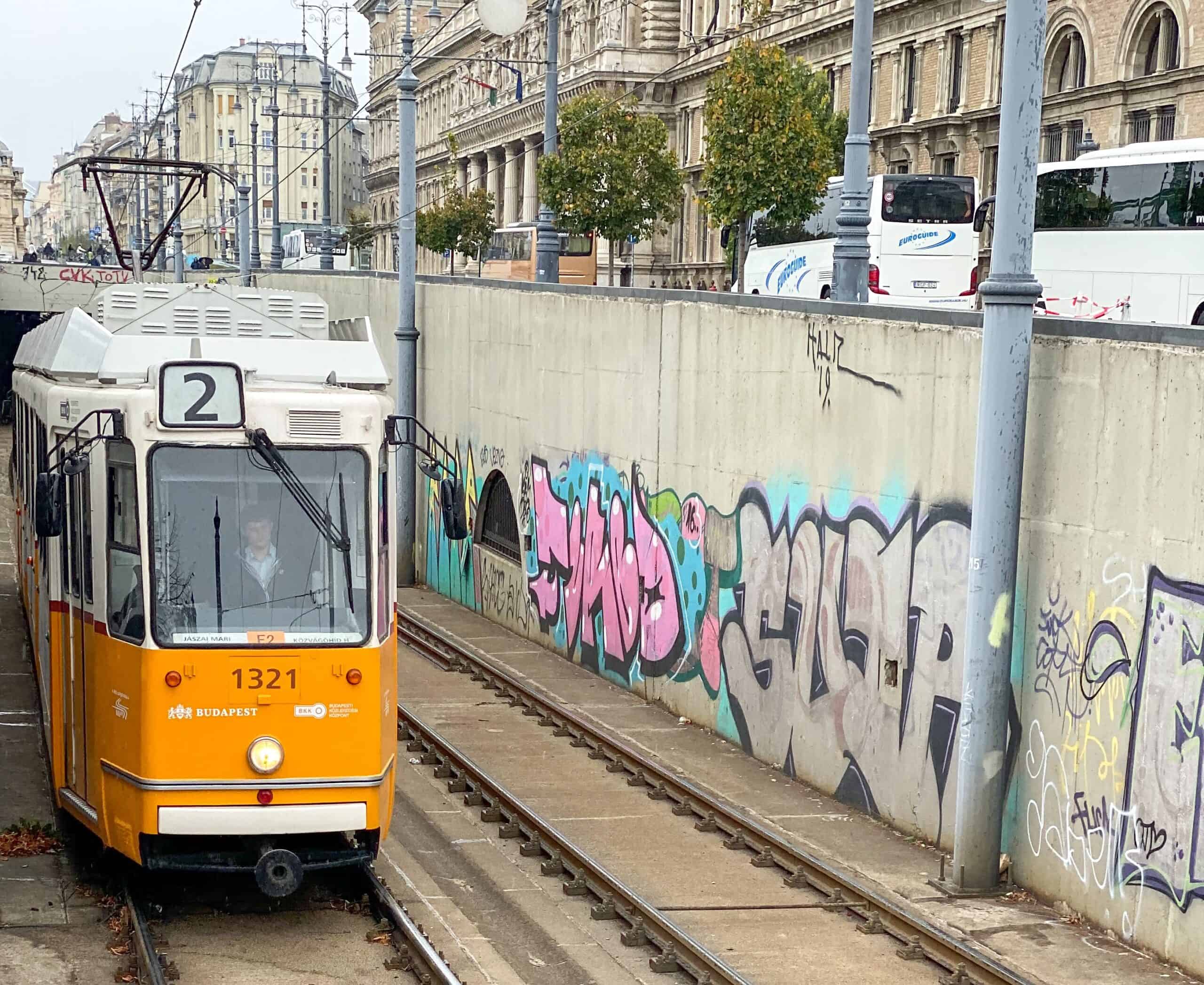
Getting around Budapest: the ultimate guide to public transport (2025 updates)
Discover the best ways of getting around the city – from metros, trams, and buses through taxi companies to eco-friendly transport alternatives. Budapest offers a wide range of great pulblic transport opportunities.
Compared to other large European cities, Budapest is fairly easy to get around, mostly thanks to its extensive public transport system and some really useful eco-friendly ways that have become very popular lately. From metros and trolley buses to suburban railway lines and even boat services and electric scooters, you’ll surely find your favorite way of getting from point A to point B in a quick, efficient and affordable manner. So let us take a look at different ways you can make the best of your travel in this gem of a city.
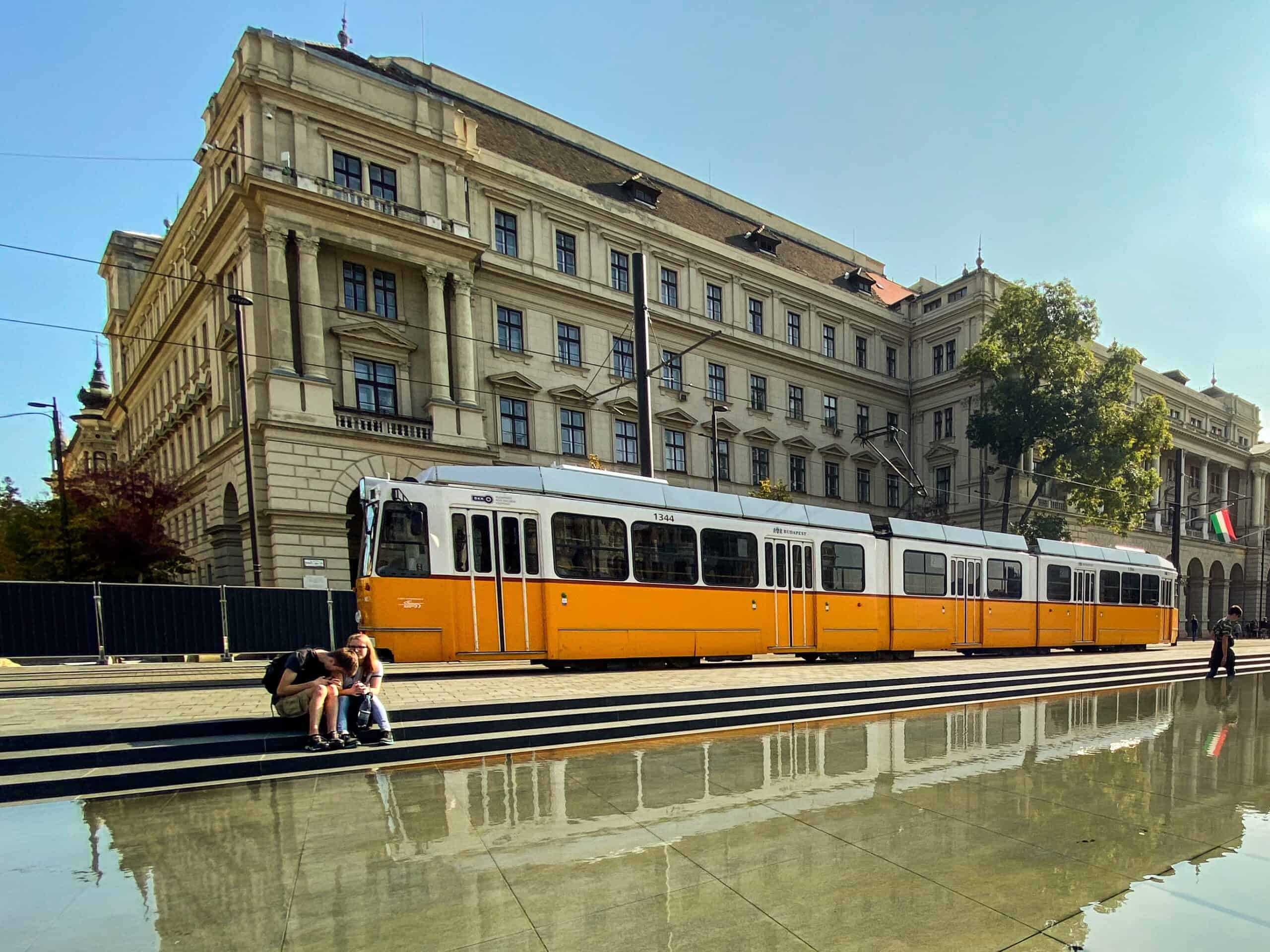
Public transportation
Getting around Budapest by public transport is not only convenient but also affordable – if you choose the right tickets or travel passes. Most public transport services are operated by the Budapest Transport Centre (BKK – short for Budapesti Közlekedési Központ, www.bkk.hu), which manages buses, trams, trolleybuses, metro lines, and even some suburban railways (HÉV) within the city limits.
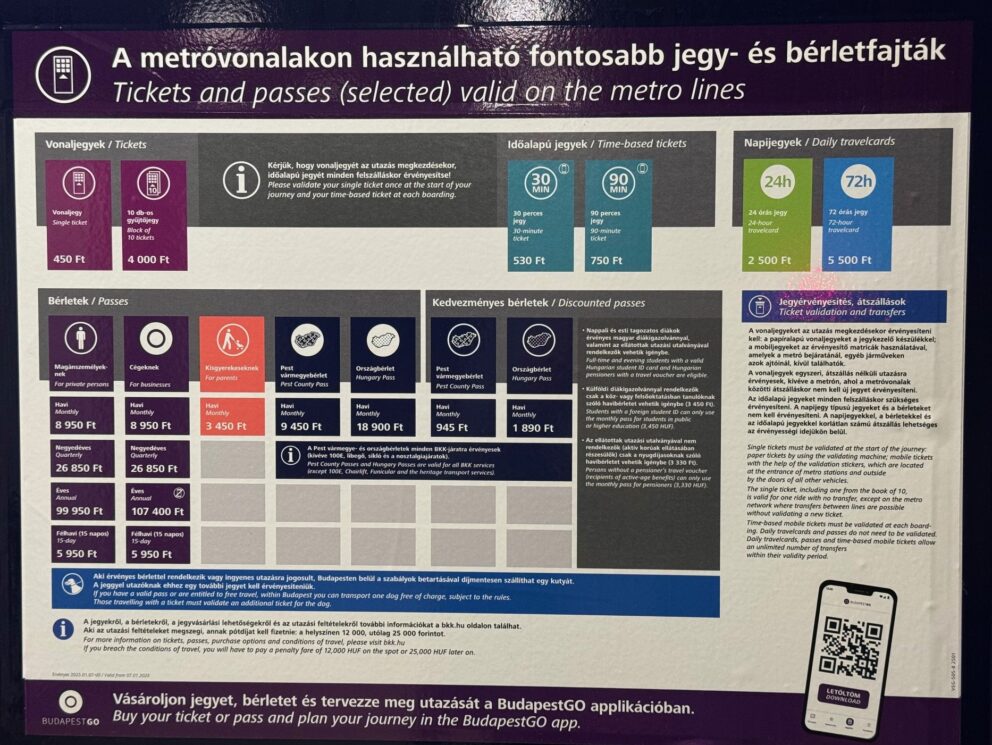
Getting from Budapest Airport to the city center – your transfer options
Most travelers arrive in the Hungarian capital via Budapest Ferenc Liszt International Airport, making it the first stop on their journey. Whether you prefer convenience, budget-friendliness, or speed, there are several Budapest airport transfer options to choose from — and selecting the right one can significantly improve the start of your trip.
For those opting for public transportation from Budapest Airport, two main bus lines serve the route: bus 100E and bus 200E. Bus 100E offers a direct shuttle service to Deák Ferenc tér, located in the very center of Budapest. It’s the fastest and most straightforward way to reach downtown — ideal for tourists with luggage or limited time. This airport shuttle requires a special ticket (currently (June 2025) priced at 2,200 HUF), which is different from the standard public transport tickets or passes.
Bus 200E, on the other hand, connects the airport to Kőbánya-Kispest metro station, the terminus of metro line 3, from where you can continue your journey into the city by metro.
However, if you’re looking for a more comfortable, door-to-door airport transfer service, we also offer private airport transfers that take you directly to your accommodation with no need to worry about schedules, luggage handling, or transfers. This is a great option for families, groups, or anyone arriving late at night or with heavy bags.
Besides shuttles and private cars, there are also reliable airport taxis and long-term parking options available, depending on your needs. Whether you’re arriving, departing, or organizing transport for a guest, Budapest provides a wide range of solutions for a smooth start and end to your visit.
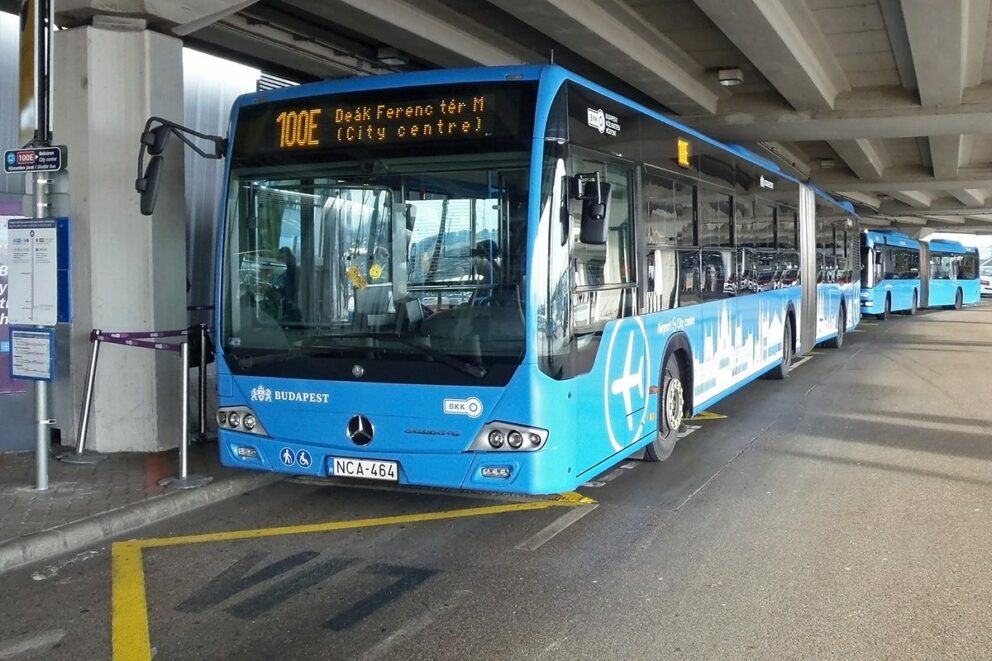
Buses and night buses in Budapest
With over 260 bus routes, the Budapest bus network plays a vital role in public transportation across the city. Buses connect even the outer districts with the central areas, making them an excellent option if your accommodation is located further from the main metro lines. Whether you’re heading to a tourist hotspot or simply trying to get to a nearby metro station, buses in Budapest provide a reliable and cost-effective way to travel.
While buses can be slower during peak traffic hours, they are generally well-scheduled and punctual. For travelers who plan to explore beyond central Budapest, buses are often the best link to reach suburban neighborhoods or hidden gems off the usual tourist path.
If you’re out late exploring Budapest’s vibrant nightlife, you’ll be happy to know that night buses operate on most major routes, ensuring that you can always find your way back safely — even after midnight. These late-night lines are especially useful when metro services stop running, and they often connect with key transport hubs in the city.
To make the most of the bus system, you may want to consider using a Budapest Card, which offers unlimited access to buses and other public transport. And don’t forget: having a valid ticket or pass is essential to avoid penalty, as ticket inspectors frequently check passengers on both day and night buses.
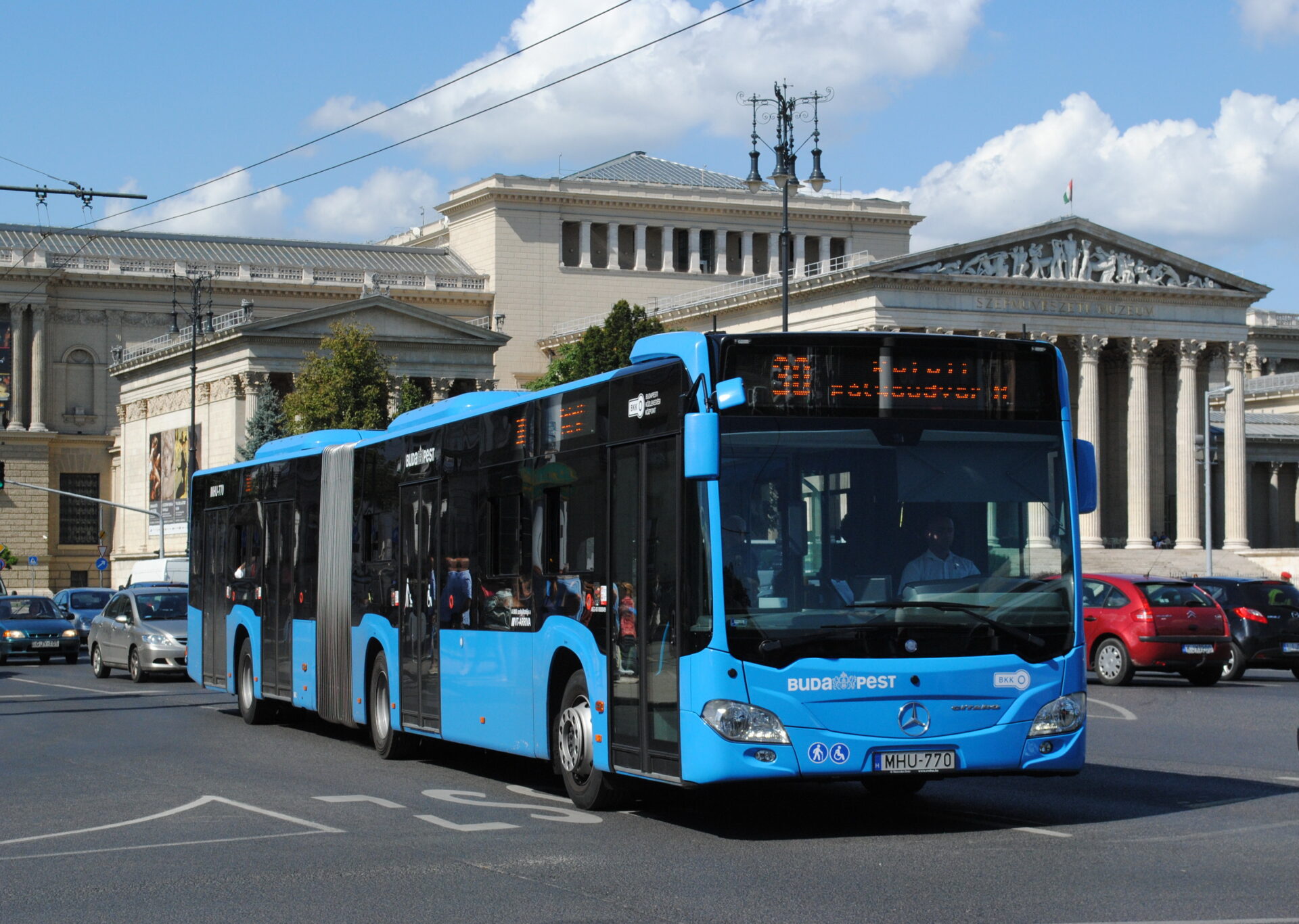
Trams in Budapest – scenic, efficient, and iconic
If you’re looking for a scenic and stress-free way to get around the city, Budapest’s tram network is hard to beat. With one of the largest and oldest tram systems in the world, trams have long been a staple of public transportation in Hungary’s capital. Unlike buses, they typically run on dedicated tracks, meaning trams rarely get delayed by traffic, making them one of the fastest and most reliable ways to travel across the city.
The Grand Boulevard (Nagykörút) is served by tram lines 4 and 6, which together form the beating heart of Budapest’s mass transit system. These lines operate with modern, low-floor trams, and are famous for their high frequency and round-the-clock service — in fact, tram 6 runs all night, making it a favorite among locals and night owls alike. The minimal difference in their routes makes this duo the most used tram service in Budapest — and even globally.
For a more nostalgic ride, hop on tram lines 47 or 49, which pass through Deák Ferenc tér, the main downtown hub. On weekends, line 48 also joins in. These lines operate retro-style carriages that harmonize beautifully with the city’s historic architecture and iconic landmarks.
One of the true highlights of Budapest’s tram system is tram line 2, which was named one of the most beautiful tram routes in the world by National Geographic. Running parallel to the Danube River on the Pest side, this line offers breathtaking views of Buda Castle, the Parliament, and Gellért Hill, making it a must-ride for every visitor. It’s a perfect blend of practical transportation and panoramic sightseeing, especially if you’re not taking a hop-on hop-off tour but still want to admire the city’s top attractions from your seat.
And if you’re a fan of beautiful journeys, you’ll definitely want to explore more scenic transportation lines in Budapest — including funiculars, historic metros, and boat rides — all offering a unique way to experience the vibrant charm of Hungary’s capital.
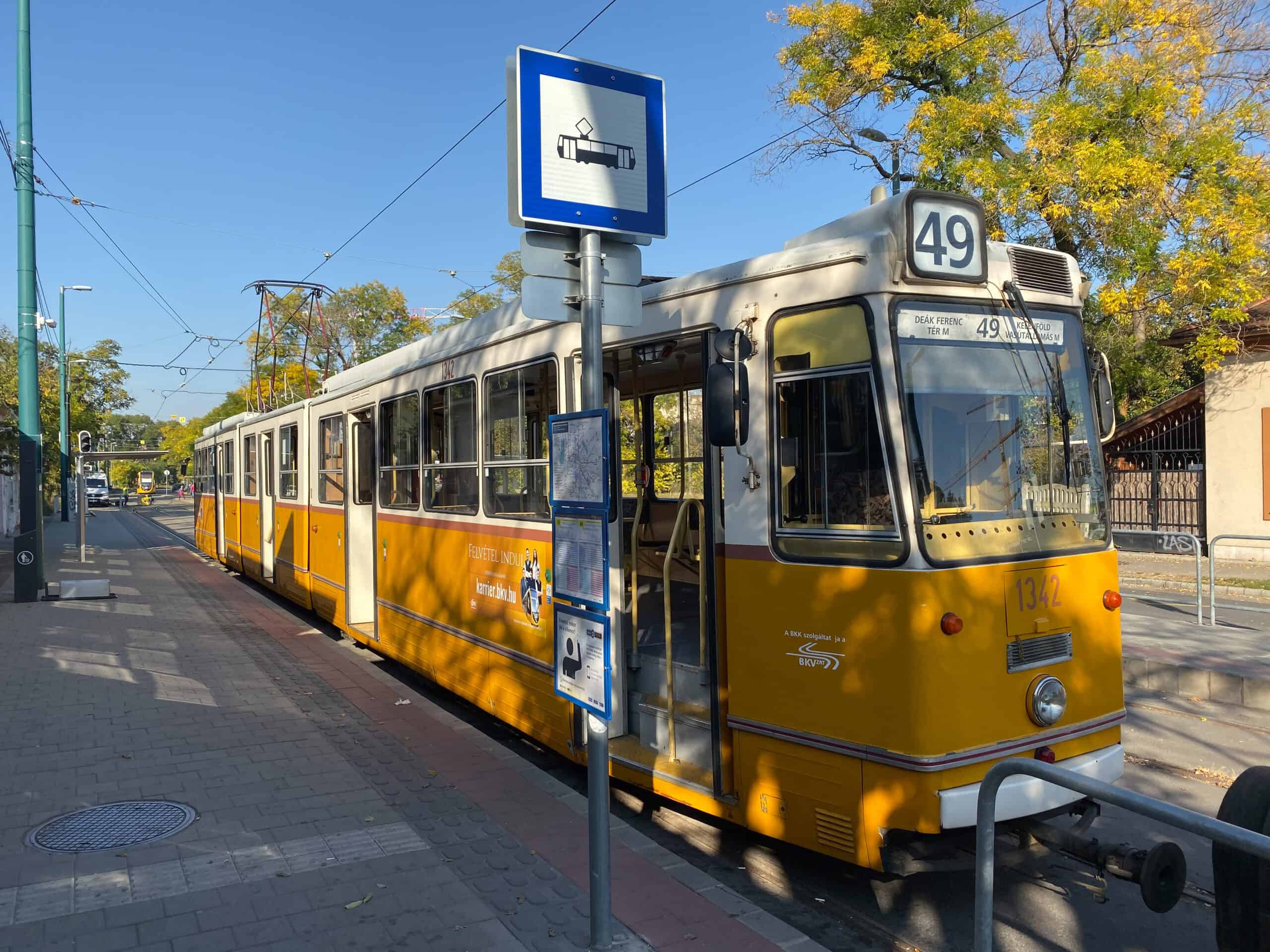
Metros in Budapest – where history meets modernity underground
Budapest’s metro system is not just a means of getting from A to B — it’s a journey through time. The city is home to Metro Line 1, the second oldest metro line in the world, which began operation in 1896 to commemorate the 1000th anniversary of the Hungarian state. Also known as the Millennium Underground Railway, this charming line runs beneath Andrássy Avenue, a UNESCO World Heritage site, and has preserved its original character through careful renovation. Step into one of its classic yellow carriages and enjoy the vintage stations and art nouveau atmosphere — it’s like time-traveling beneath the streets of Budapest.
For getting around the modern city efficiently, Deák Ferenc tér is your go-to hub. This centrally located square is the main interchange where metro lines M1, M2, and M3 meet, making it a key transfer point in the heart of Budapest. Whether you’re heading to the Parliament, the Great Market Hall, or City Park, Deák is likely on your route.
Budapest’s most recent metro addition, Metro Line 4 (M4, a.k.a. green line), opened in 2014 and connects two major train stations: Keleti Pályaudvar in the east and Kelenföld Vasútállomás in the southwest. Designed with a strikingly modern look, this line showcases Budapest’s ability to blend historical legacy with cutting-edge infrastructure. If you’re arriving in the city by rail, Line 4 is often the fastest way to reach the center.
From historic charm to sleek efficiency, Budapest’s metro system truly offers the best of both worlds — and is a must for anyone hoping to experience the city like a local.
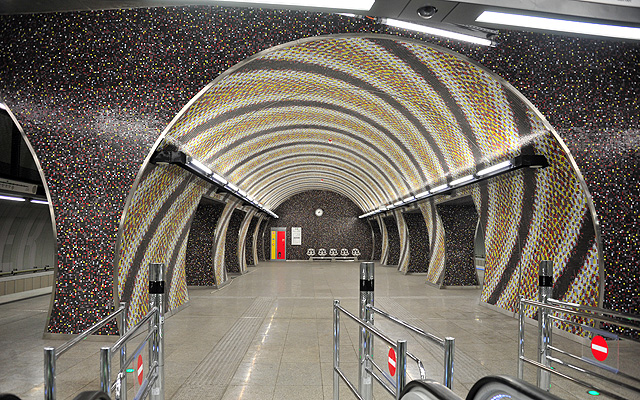
Trolley buses in Budapest – quirky history and eco-friendly travel
When it comes to public transportation in Budapest, trolley buses add a unique and nostalgic twist. Operating mostly in the central districts of the city, trolley buses are a quieter, more eco-conscious alternative to regular buses. With 15 lines in total, they weave through key neighborhoods and offer an efficient way to explore downtown without the noise and emissions of fuel-powered vehicles.
What often surprises first-time visitors is their unusual numbering system. The lowest number you’ll spot is 70, and there’s a story behind that. The first trolley bus line was launched in 1949 and was numbered 70 as a symbolic gesture to mark Joseph Stalin’s 70th birthday — a reflection of Hungary’s political ties at the time. While the tribute is long forgotten by most, the numbering tradition has remained ever since.
Today, trolley buses are a great option if you’re staying near popular spots like Heroes’ Square, City Park, or the Embassy District. Plus, they’re included in the standard BKK ticket and pass system, so you don’t need anything extra to ride.
Whether you’re a fan of sustainable travel, curious about Budapest’s layered history, or simply want to avoid traffic, trolley buses offer a charming and practical ride through the city.
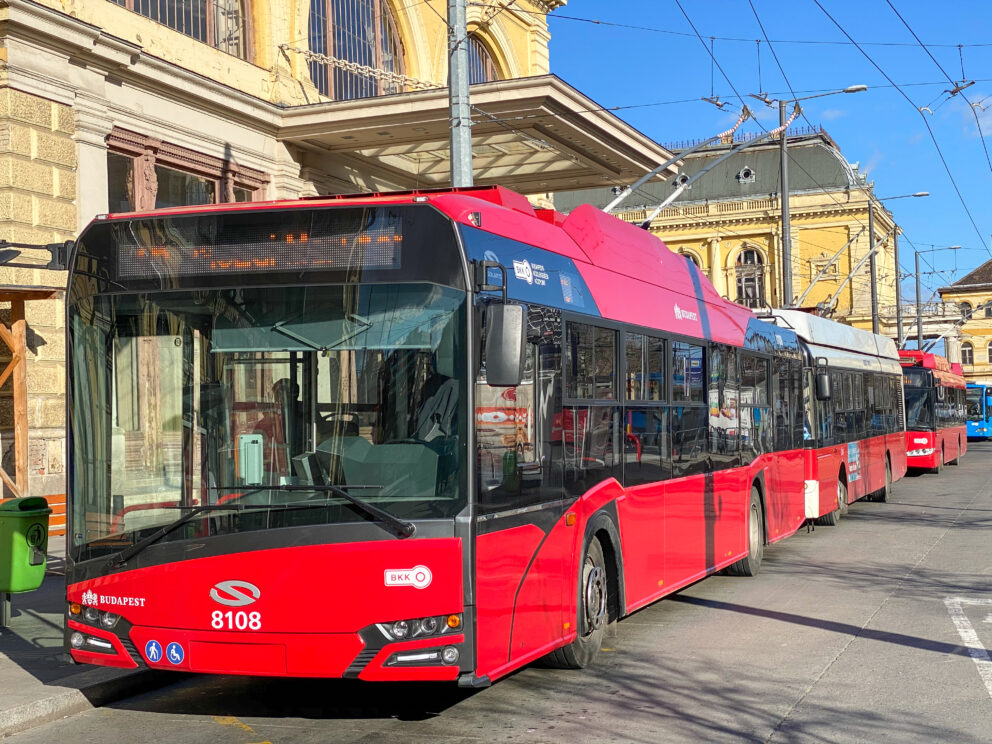
Boats – a scenic and relaxing way to discover Budapest
Yes, you can explore Budapest by boat too! BKK offers a sightseeing boat service in downtown Budapest, providing stunning views of the city’s landmarks and architecture from the Danube. Passengers can access information about the sights in 11 languages via QR codes onboard. The one-hour daytime round trip runs hourly from 11 a.m. to 7 p.m., stopping at key locations including Kossuth Lajos tér, Margaret Island, and Batthyány tér. Bicycles and pets (in carriers) are welcome, and the service is available all day with a single day ticket, even with breaks.
The evening sightseeing boat operates a non-stop round trip, departing from and returning to Kossuth tér without stopping at any other ports.

Suburban railways (HÉV) – connecting the city to its outskirts
If you’ve spotted a green train with a white stripe zipping through the city, you’ve seen the HÉV – Budapest’s suburban railway system. These lines are designed to connect outlying towns and suburbs to the capital, but they also include multiple stops within Budapest, making them a practical option for reaching less central neighborhoods, outside Budapest.
HÉV lines operate similarly to metro lines and are managed by the Budapest public transport authority, BKK. Although not officially part of the metro network, they are integrated with the system, and transfers are possible at key hubs like Batthyány tér (line H5) or Közvágóhíd (line H7). If you’re planning to use Budapest’s metro and suburban railways together, make sure to check the appropriate ticket zones.
Every summer, the HÉV becomes the preferred travel option to reach Sziget Festival, as the H5 line takes partygoers directly to the island where the event is held. It’s a quick and affordable way to skip traffic and enjoy the journey.
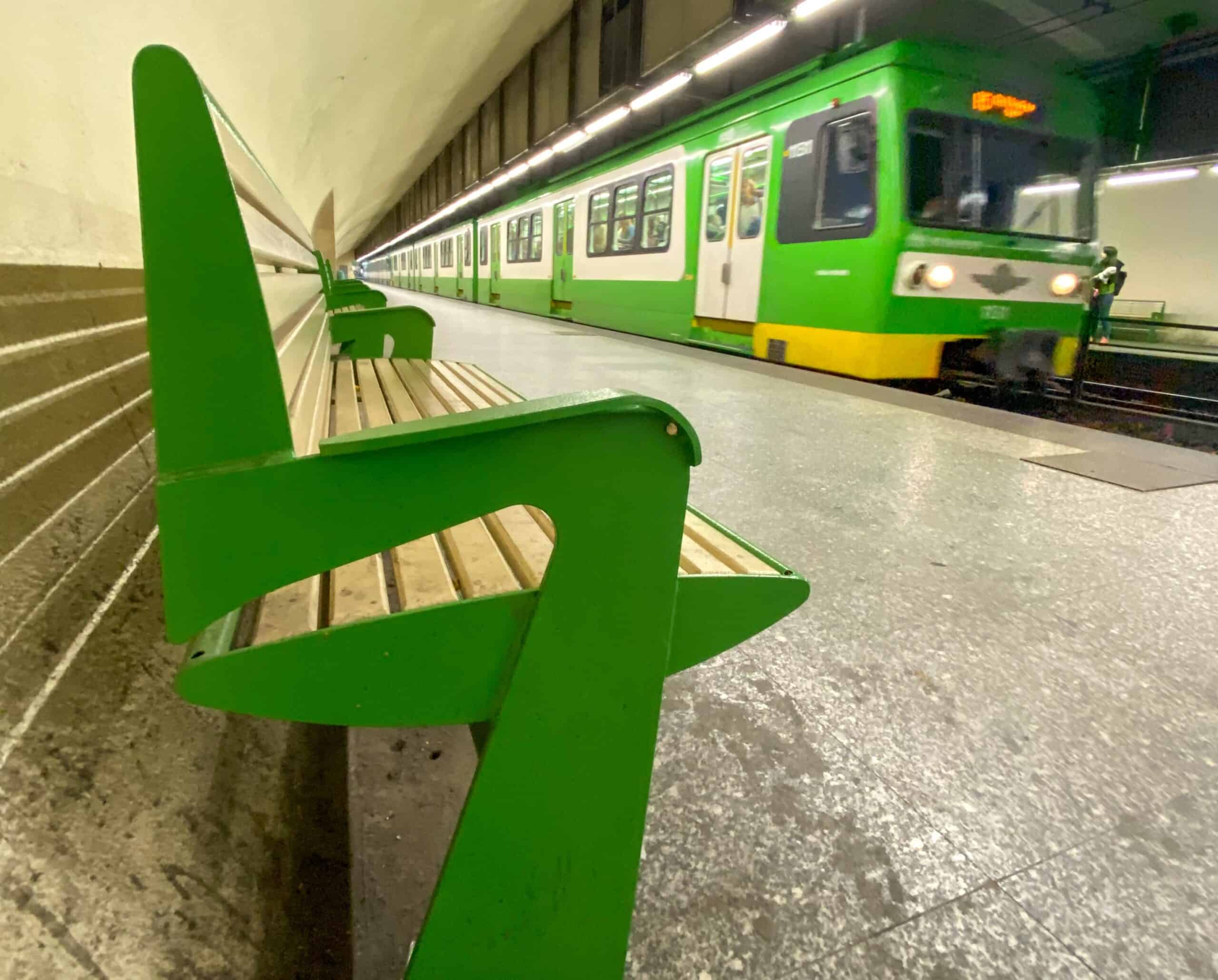
Buda Castle hill funicular (Sikló) – A historic ride with a view
For a truly unique and scenic way to get around Budapest, don’t miss the Castle Hill Funicular, locally known as the Sikló. This charming piece of historical public transport has been operating since 1870 and remains one of the most iconic ways to reach the Buda Castle from the Széchenyi Chain Bridge at river level.
The funicular glides up the steep hillside in just a couple of minutes, offering breathtaking views of the Danube River, Pest skyline, and the historic architecture that surrounds you. Whether you’re visiting the Castle District for its museums, cobbled streets, or panoramic lookouts, taking the Sikló is not just transportation – it’s part of the experience.
Although it’s not part of the BKK network (so regular tickets and passes are not valid), this heritage railway is well worth the small extra fee, especially if you’re looking for memorable things to do in Buda.
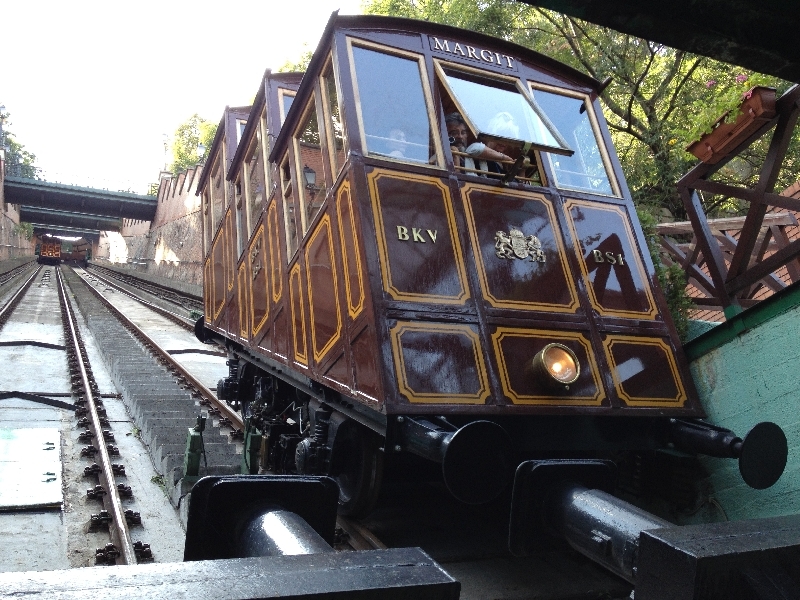
Budapest has some unique public transport solutions as well
Budapest has some really fun and festive public transport options during the holiday season. The Christmas Light Tram is covered in thousands of sparkling LED lights and looks magical as it rolls through the city. There’s also a Santa Trolleybus and a Santa Bus, both decorated for the holidays and often with little surprises for kids on board. These special rides usually run throughout December and are a hit with both locals and tourists. In the past, there was even a LEGO tram, which made the streets feel extra playful and fun.
The Cogwheel Railway is a unique train line that climbs up into the Buda hills, offering great views and a fun way to reach hiking spots like Normafa. It runs like a regular part of the city’s transport system, but feels more like a little mountain train.
The Children’s Railway is operated by children (under adult supervision) and takes you on a scenic ride through the forests of the Buda hills. It’s a charming and unusual experience that’s especially fun for families.

Tickets and passes for public transport in Budapest
Where to buy tickets and passes?
You can purchase your public transport tickets or passes from:
- The purple BKK vending machines (for paper tickets) found at metro station entrances and major hubs (payment by cash or card).
- Customer service points at busy stations.
- Some bus drivers, although this is more expensive and limited in ticket type.
Remember: tickets must be validated before boarding (either by punching them in machines or scanning them digitally). Passes, on the other hand, don’t need validation — but you must always carry them, as occasional ticket inspections do happen, and fines for traveling without a valid ticket can be steep.
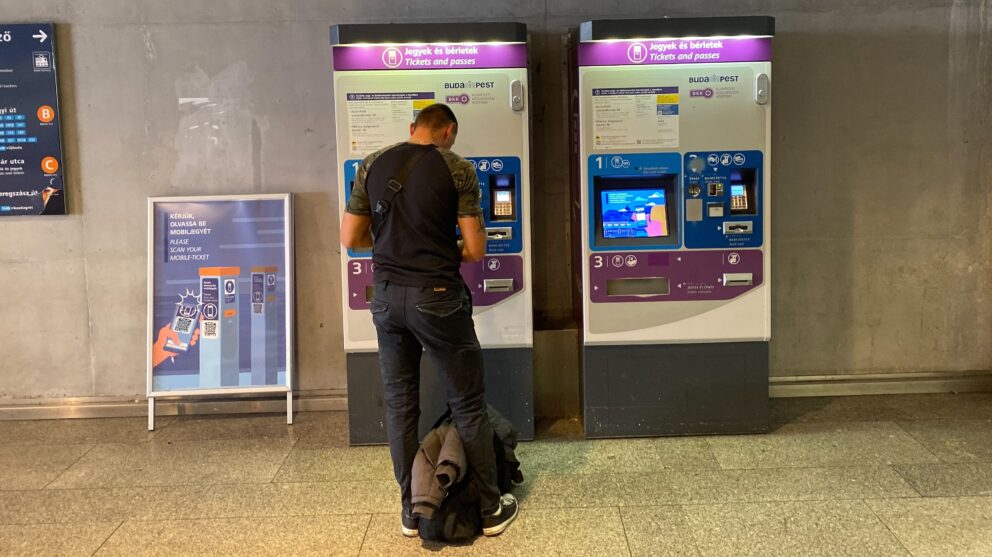
What kind of ticket should you get?
our best choice depends on your itinerary and how long you’ll stay in Budapest. Here are the most popular options:
- Single ticket – for one uninterrupted ride (no transfers allowed) (500 HUF)
- 10 single tickets in pack (4,500 HUF)
- 24-hour travelcard – ideal for intensive sightseeing in a single day (2,750 HUF)
- 72-hour pass – perfect for long weekends (5,750 HUF)
- 7-day travelcard – great for week-long stays or work visits
- monthly Budapest pass – for longer stays
- Budapest Card – includes unlimited public transport and free/discounted entry to many attractions
For a complete list of up-to-date ticket types and prices, visit the official BKK website.
Some are eligible for free public transport in Budapest. Have to mention that, some special services, like the 100E airport shuttle require a separate ticket.
- Children under the age of 14 can travel free of charge on BKK services, with proof of age required (e.g., student ID or passport).
- EU, EEA (European Economic Area), and Swiss citizens over the age of 65 also qualify for free travel by showing a valid ID.
- Blind or visually impaired passengers and one accompanying person may travel for free with official certification.
- Budapest Card holders can also use BKK transport for free during the card’s validity period.
For understanding the price of tickets it is worth to check this post about the Hungarian currency and its exchange rate.
What app should you download?
Make your travels easier with BudapestGO application, the official Budapest public transport app (also available via website). It provides:
- Real-time departure information
- Route planning
- Vehicle tracking
- Route maps and disruptions
Whether you’re hopping on a tram, metro, or night bus, this app is a must-have for stress-free city navigation.
Alternative transport options in Budapest
Taxis in Budapest – what you should know
Taxis are a comfortable and widely available option for getting around Budapest, whether you’re heading to your hotel, catching an early flight, or returning from a night out. All official taxis in Budapest must be:
- Yellow
- Clearly marked with the word “TAXI”
- Equipped with a visible fare chart and a working taximeter
This uniform appearance makes it easier to spot legitimate cabs and avoid unlicensed or overpriced alternatives.
Budapest taxi fares
Taxi prices in Budapest are regulated by the government, which helps prevent overcharging. The fare (in June 2025) structure consists of:
- Base fare: 1,100 HUF
- Distance-based fare: 440 HUF/km
- Time-based fare (e.g. in traffic): 110 HUF/min
There are no night-time or weekend surcharges, so pricing is consistent all week long.
How to avoid taxi scams
While most taxi drivers are professional and reliable, scams can still happen, especially around tourist hotspots. To stay safe:
- Avoid hailing taxis on the street in front of train stations, bars, or major attractions
- Use official taxi apps or phone dispatch services from trusted companies
- Pre-book your ride through a reliable service provider (like us 😉)
For safe and stress-free travel, you can book your Budapest airport transfer or city ride with us – our prices are transparent, our vehicles clean and comfortable, and our drivers speak English.
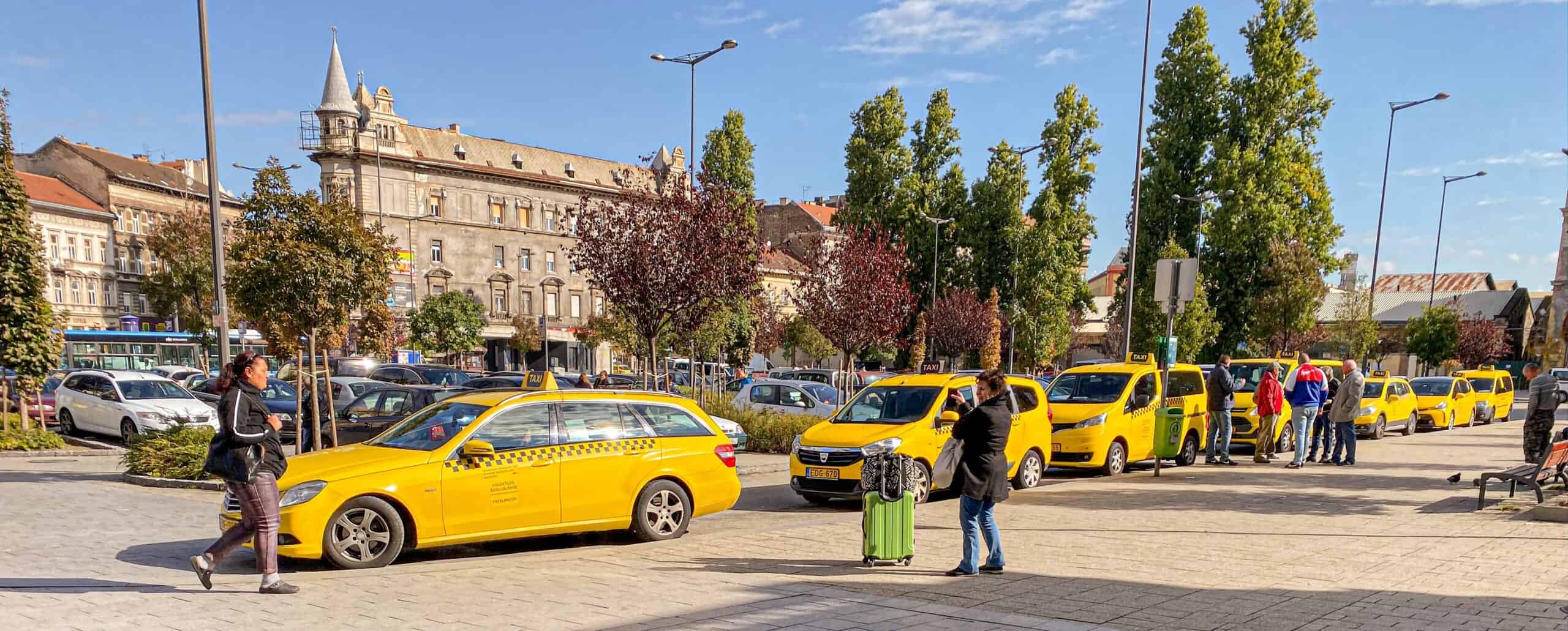
Bolt – the most popular ride-hailing app in Budapest
Since Uber is no longer available in Hungary, Bolt has become the go-to alternative for ride-hailing in Budapest. It’s widely used by both locals and tourists thanks to its affordable fares and user-friendly app.
Using Bolt is easy:
- Just download the app from your app store
- Register your credit or debit card
- And you’re ready to order a ride to anywhere in the city — including Budapest Airport, tourist attractions, or your accommodation
Bolt rides are usually cheaper than traditional taxis, and you can see the estimated fare in advance, which helps avoid unexpected surprises. It’s also a great option during peak hours or late-night outings when public transport is limited.
MOL Bubi – explore Budapest by bike
Feeling active? Budapest has become increasingly bike-friendly in recent years, making cycling one of the most enjoyable ways to discover the city. Whether you’re commuting or sightseeing, MOL Bubi offers easy, app-based bike rentals throughout the city.
MOL Bubi is the official bike-sharing system of Budapest, operated by BKK. With over 2,000 bright green bikes and more than 200 docking stations, it’s a convenient option if you’re staying near the city center or major transport hubs. Download the app, register, and you can rent a bike within minutes. Pricing is flexible: there’s a daily, monthly, or pay-as-you-go option, and rides under 30 minutes are often free with a pass.
MOL Bubi is perfect for discovering places like Margaret Island, the Danube promenade, or the Buda Castle area at your own pace.
Lime e-scooters – Eco-friendly urban mobility in Budapest
Prefer a more relaxed, yet still eco-conscious way to get around Budapest? Lime electric scooters offer a fun and flexible solution. With their growing presence in the city, these shared e-scooters are perfect for short rides or covering the “last mile” between public transport stops and your destination.
All you need to do is download the Lime app, register, and unlock a nearby scooter with your phone. No bike lanes? No problem. Lime scooters are allowed on bike paths and smaller streets, making them a great option for quick inner-city travel.
Whether you’re commuting, sightseeing, or just cruising through the downtown, Lime helps you avoid traffic and reduce your carbon footprint at the same time. Make sure to check the app for real-time scooter availability and local riding zones before you start your ride.
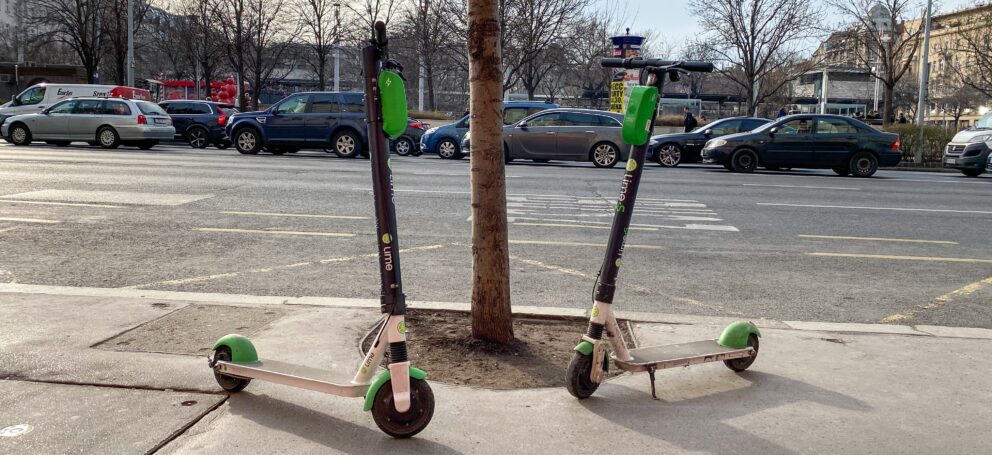
Hop-on Hop-off sightseeing bus tours in Budapest
Want to explore all the top attractions in Budapest without navigating public transport or relying on taxis? Then hop-on hop-off sightseeing bus tours are your ideal choice. These comfortable, air-conditioned double-decker buses offer a convenient way to discover the city’s highlights at your own pace.
From Heroes’ Square to the Buda Castle, and from the Hungarian Parliament to Gellért Hill, these tours cover all the must-see locations – and you’re free to hop off whenever something catches your eye. Buses run regularly, so you can continue your journey whenever you’re ready.
These sightseeing buses also pass by many of Budapest’s famous statues, each with its own story tied to the city’s rich history. If you’re curious about the people and events behind the monuments, or just want to soak in the city’s vibe from an open-top bus, this is a great option.
FAQ
What is the best way to use public transport in Budapest?
A: The best way to use public transport in Budapest is through the BKK services (centre for budapest transport, bkk.hu), which include buses, trams, and the Budapest metro. You can purchase tickets from vending machines, tobacconists, or through the BudapestGO application for convenience.
How does the Budapest Card work for public transport?
A: The Budapest Card provides unlimited travel on all public transport services within Budapest, including the metro, buses, and trams. It also offers discounts at various attractions and is valid for a specified number of days.
What are the different types and prices of tickets available for Budapest transport?
A: Several types of tickets are available for Budapest transport, including single tickets, 10-ride tickets, and day passes. Prices vary based on the type of ticket and whether you are eligible for a discount, such as for students or seniors.
How can I validate my ticket for public transport in Budapest?
A: To validate your ticket for public transport in Budapest, you must stamp it at the validation machine before boarding. For electronic tickets purchased via the BudapestGO application, validation is automatic upon activation.
What happens if I do not validate my ticket on Budapest public transport?
A: If you do not validate your ticket, you may be subject to a penalty fare when checked by transport staff. It is essential to ensure your ticket is validated to avoid additional charges.
Is there free public transport for certain groups in Budapest?
A: Yes, certain groups, such as children under the age of 6, can travel for free on Budapest public transport. Additionally, there are discounts available for students and seniors, which can be applied to regular fare prices.
How can I find my way around using public transport in Budapest?
A: You can use a map available at stations or download the BudapestGO application for real-time updates and route planning. Google Maps also provides information on public transport routes and schedules in Budapest.
Are there public transport services that connect the airport and the city centre?
A: Yes, there are public transport services, including buses and taxis, that connect the airport to the city centre. The 100E bus is a direct service linking Budapest Airport with major points in the city.
What types of vehicles are used in Budapest public transport?
A: Budapest public transport includes various types of vehicles such as buses, trams, trolleybuses, and the metro. The M1 line of the metro, for example, opened in 1896 as part of the Hungarian Millennium celebrations and is one of the oldest metro lines in the world.
More interesting and useful tips
Parking Budapest – check out our article on this topic to avoid fines and find the best parking spots, even for free.
If you are looking for the most atmospheric Irish bar in Budapest, this list is just for you!
